
If you love gardening, zucchini is a fun way to make your garden look beautiful and grow food.
Zucchini plants can grow in many ways, like climbing up a fence or growing in pots. You can try making a zucchini patch next to tomatoes or flowers to help them grow better. Big leaves can shade other plants, and bees love zucchini flowers.
With simple ideas, even kids can help grow zucchini in small spaces.
Want to try something new? Use old containers or build a treehouse for zucchini vines. Plant zucchini near herbs to keep bugs away. Grow them in a rainbow patch with different colors.
Zucchini is easy to care for and gives lots of food. Start small and watch your garden grow. Try these ideas and see what works best!

Growing zucchini vertically with trellises is a brilliant way to maximize space in your garden while promoting healthier plants. By training zucchini vines to climb upward, you allow for better air circulation and sunlight exposure, which can lead to improved fruit production. Using sturdy trellises made from wood or metal, you can easily guide the plants as they grow. This method not only keeps the zucchinis off the ground, reducing the risk of pests and rot, but also creates an eye-catching vertical garden display.

Companion planting can enhance the growth and flavor of zucchini while deterring pests. Ideal companions include herbs like basil and dill, which can improve zucchini’s taste and attract beneficial insects. Additionally, planting marigolds nearby may repel harmful pests such as aphids. Corn and radishes are also great companions, as they can provide shade and improve soil structure. By strategically choosing companion plants, gardeners can create a thriving zucchini garden that promotes healthy growth and minimizes pests.
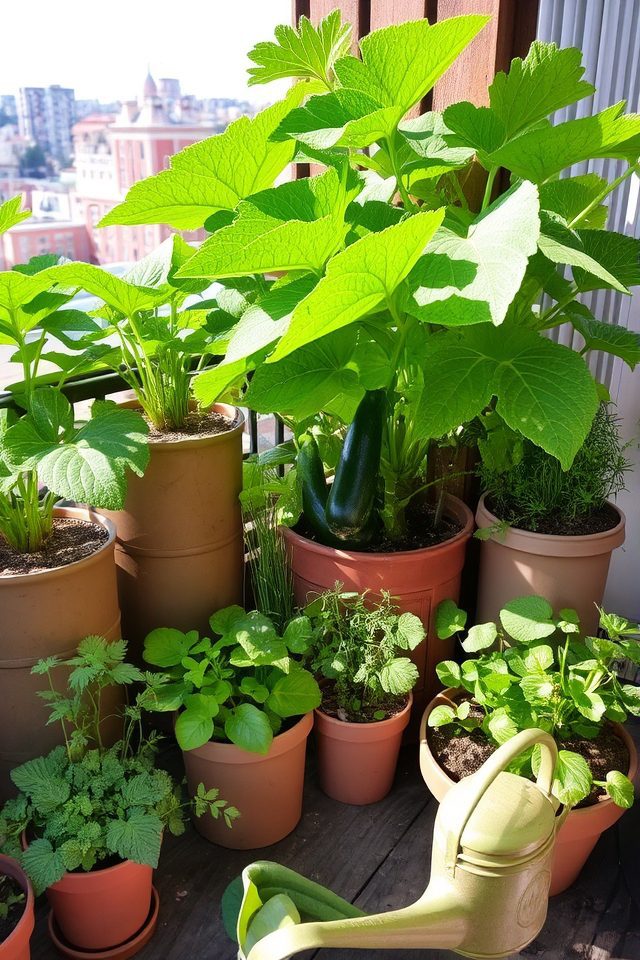
Container gardening is an excellent solution for growing zucchini in small spaces. Utilizing pots, buckets, or even vertical planters allows you to cultivate this prolific vegetable on patios, balconies, or small yards. Choose a container that is at least 5 gallons in size and guarantee it has adequate drainage. Use nutrient-rich soil and place the containers in a sunny spot to maximize growth. Regular watering and fertilization will help your zucchini flourish, even in limited areas.
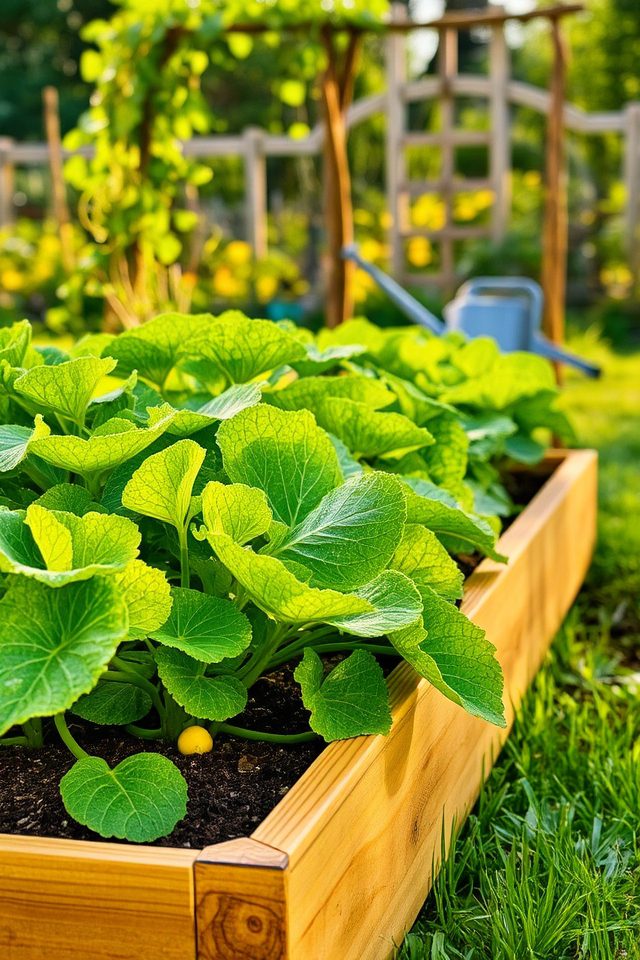
Growing zucchini in raised garden beds offers several advantages, including improved drainage, better soil quality, and easier access for maintenance. The warmer soil in raised beds can promote quicker germination and growth. With ample sunlight and space, zucchini plants thrive, producing abundant fruit. Raised beds also help deter pests and weeds, making it easier to create an ideal environment for your plants. Consider using a trellis to save space and enhance air circulation for healthier crops.
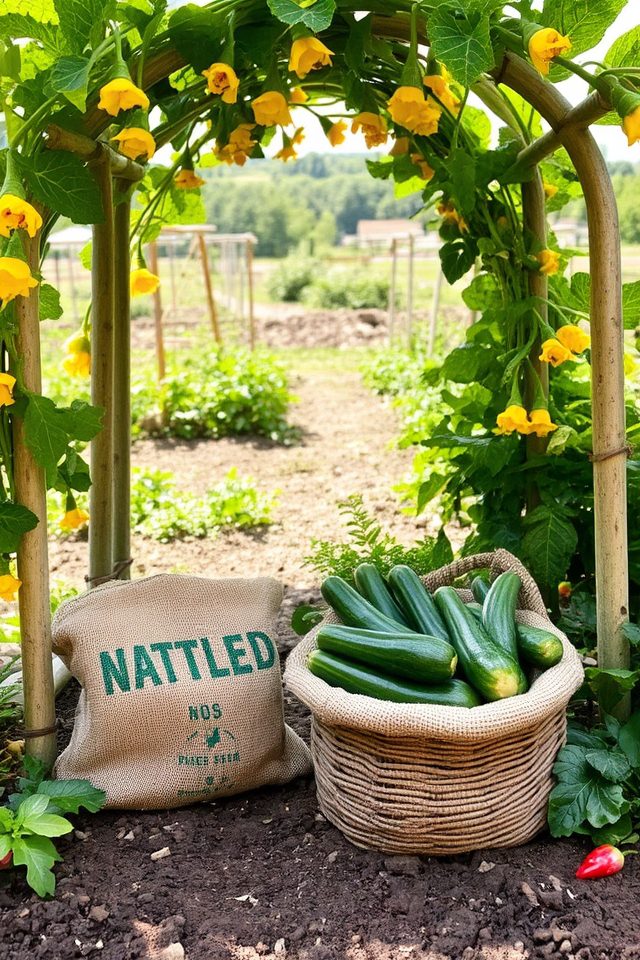
Creating a zucchini archway is a charming and functional addition to your garden, perfect for enhancing vertical space. Start by erecting a sturdy trellis or arch structure and train your zucchini plants to climb it as they grow. This not only saves ground space but also provides better air circulation and sunlight exposure for the plants. Additionally, a lush green arch can serve as a unique entry point to your garden, adding visual interest and a touch of whimsy.
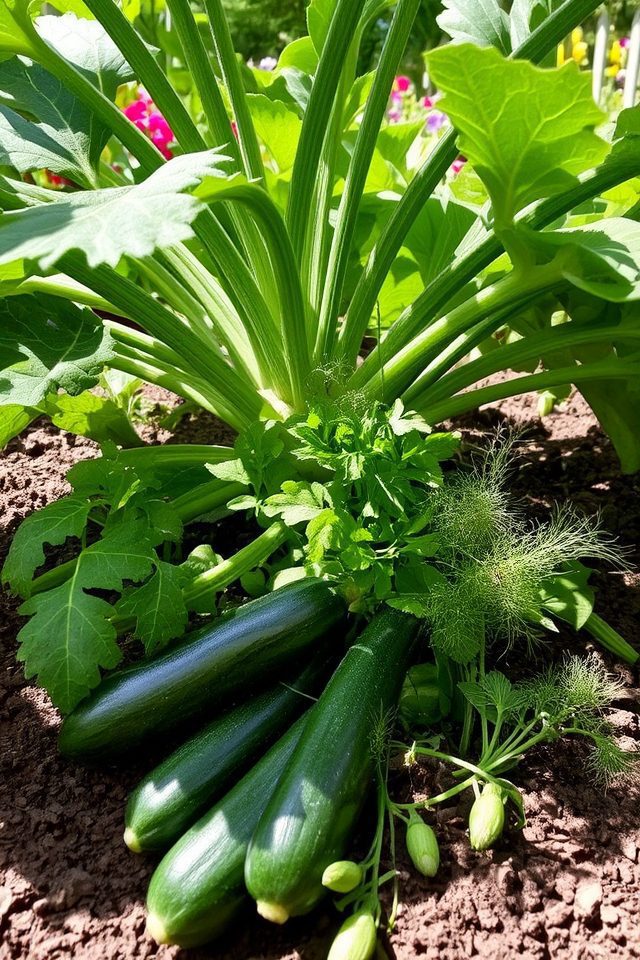
Interplanting zucchini with herbs can create a vibrant and beneficial garden ecosystem. Herbs like basil, oregano, and dill not only enhance the flavor of zucchini but also attract beneficial insects and repel pests. This companion planting method promotes healthier growth, as the herbs’ aromatic oils can confuse harmful insects. Additionally, the combination adds aesthetic appeal and utilizes the garden space efficiently, allowing for a diverse and productive harvest throughout the growing season.

Creating a Zucchini Herb Spiral is a fabulous way to maximize space in your garden while adding visual interest. This vertical structure allows you to grow zucchini alongside various herbs, optimizing sunlight and water efficiency. Construct the spiral using stones or bricks, forming a spiral shape that rises up. As you plant zucchini at the bottom and herbs like basil and oregano along the sides, you’ll enjoy both a productive garden and easy access to fresh ingredients for your culinary creations.
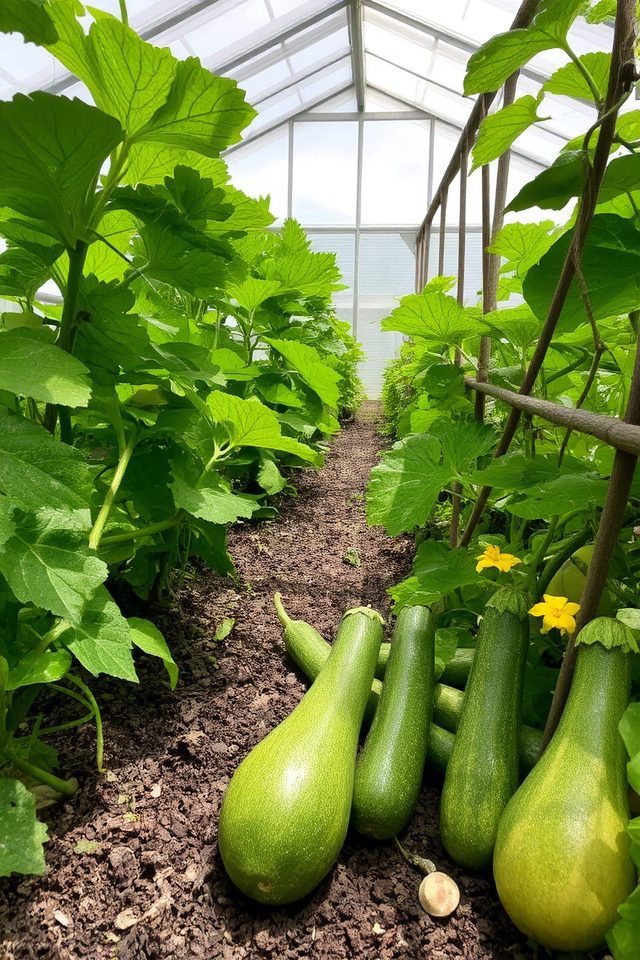
Using a greenhouse for growing zucchini can greatly extend your growing season, allowing you to plant earlier in the spring and harvest later into the fall. The controlled environment of a greenhouse protects your plants from harsh weather conditions, pests, and diseases, promoting healthier growth. Additionally, the warmth and humidity within the greenhouse can enhance the zucchini’s flavor and yield. With proper ventilation and care, you can enjoy a bountiful harvest throughout the year!
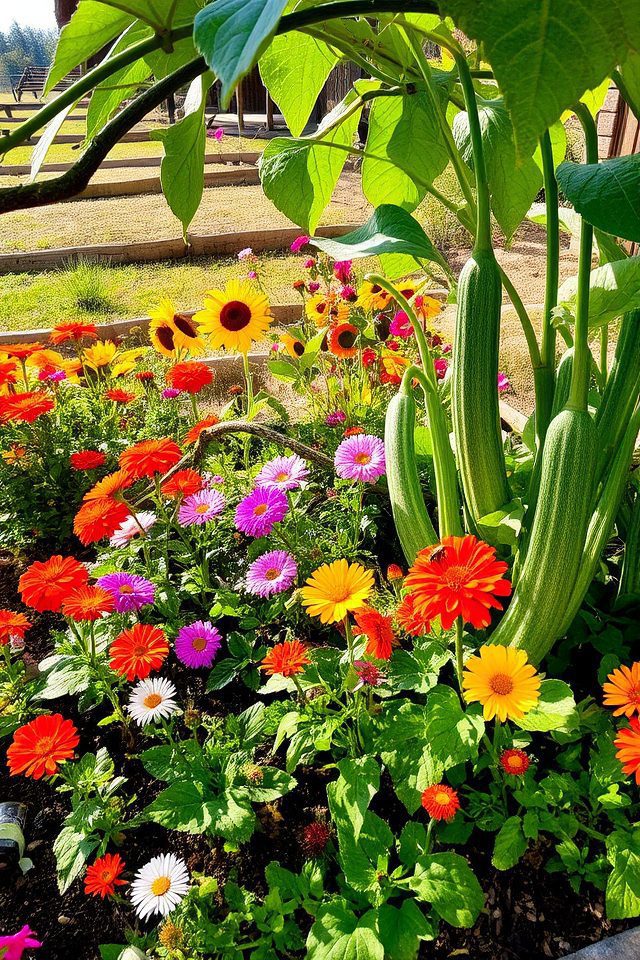
Incorporating zucchini into flower beds is a creative way to blend aesthetics with practicality. Their large, bold leaves and vibrant yellow flowers can add a striking visual element alongside your blossoms. Plant zucchini near taller flowering plants to create an appealing contrast while providing them with some shade. This not only maximizes your garden space but also attracts pollinators, helping both your edible and ornamental plants thrive together harmoniously.
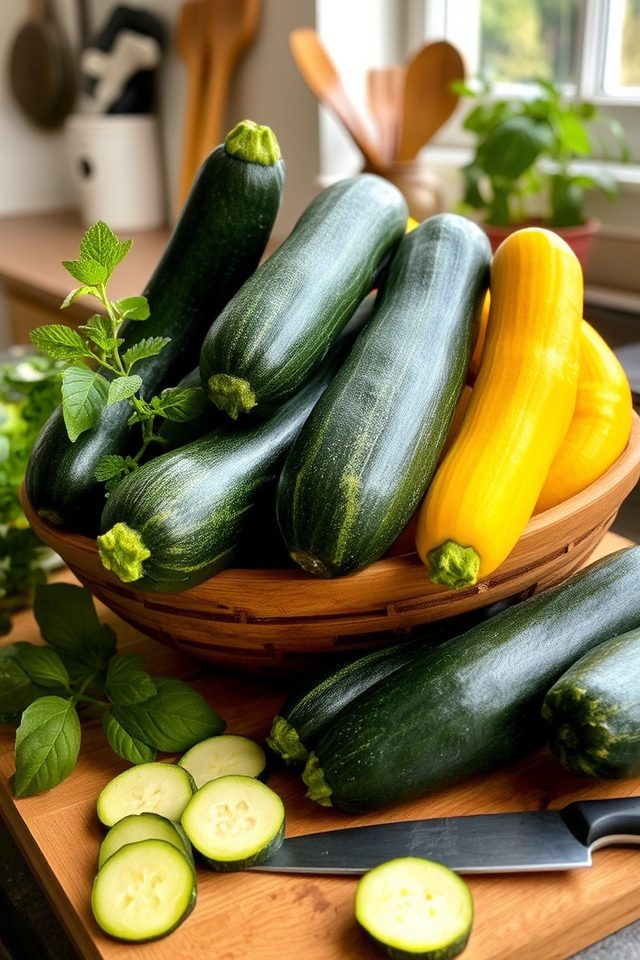
Experimenting with different varieties of zucchini can elevate your garden and culinary experiences. From traditional green squash to vibrant yellow and stripy varieties, each type offers unique flavors and textures. Some may thrive better in your climate while others bring distinct tastes to your dishes. Consider growing heirloom varieties for a colorful display and flavorful surprises. By trying out multiple types, you can find your favorites and enjoy a diverse harvest throughout the growing season.

Incorporating zucchini into a permaculture design can enhance biodiversity and promote sustainable gardening practices. Plant zucchini alongside companion crops like corn and beans to maximize space and create a mutually beneficial ecosystem. Utilize vertical gardening techniques, such as trellising, to save ground space and improve air circulation. Additionally, consider mulching around zucchini plants to retain moisture and suppress weeds, fostering a healthy environment for both plants and soil. This approach aligns with permaculture principles, creating a resilient and productive garden.

Planting zucchini in Hugelkultur beds is an innovative way to cultivate this prolific vegetable. These raised beds, constructed from decomposing wood and organic matter, offer excellent drainage and moisture retention, creating an ideal environment for zucchini growth. The wood in the bed slowly breaks down, providing essential nutrients over time, which can result in healthier plants and bountiful harvests. Additionally, the height of Hugelkultur beds makes gardening more accessible and can enhance soil warmth, promoting earlier growth.
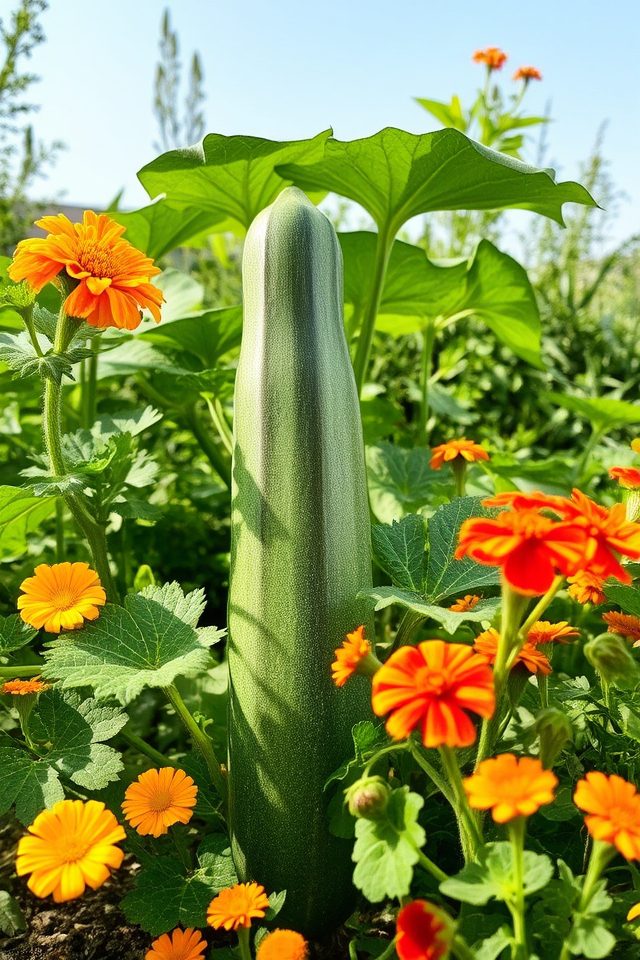
Companion flowers are an excellent natural strategy for pest control in zucchini gardens. Planting flowers like marigolds, nasturtiums, and calendulas around your zucchini can attract beneficial insects such as ladybugs and lacewings that prey on harmful pests. Additionally, certain flowers may deter pests with their scents or chemical compounds. This harmonious planting not only enhances your garden’s beauty but also creates a balanced ecosystem that helps protect your zucchini plants from unwanted invaders.
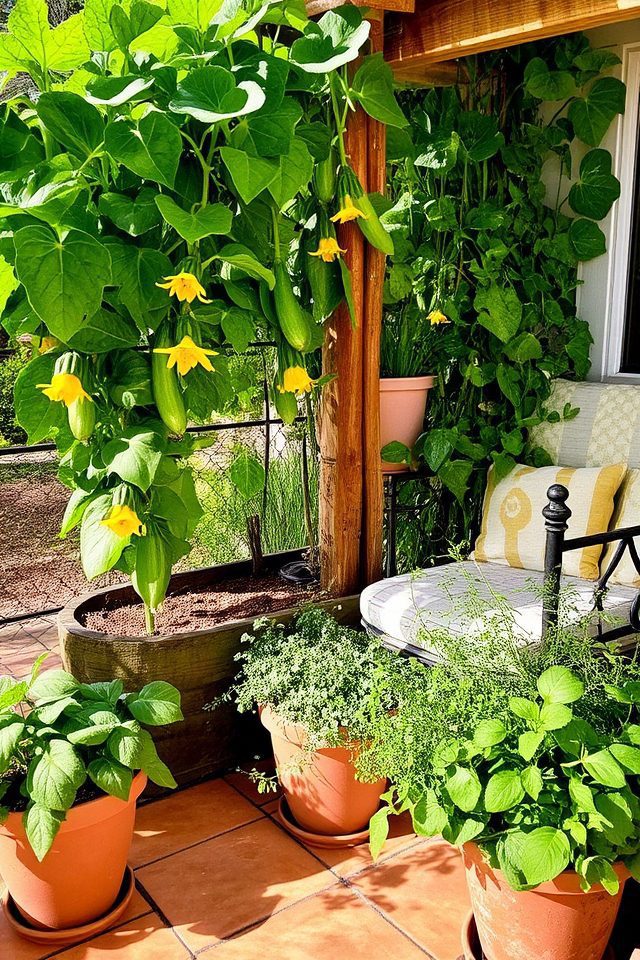
Creating a zucchini-friendly patio involves maximizing space and sunlight while providing adequate support for this sprawling vegetable. Start by incorporating raised beds or container gardening, which can help control soil quality and drainage. Use trellises or vertical supports to encourage zucchini plants to grow upwards, saving space and making harvesting easier. Make certain the area receives at least 6-8 hours of sunlight daily, and consider companion planting with herbs or flowers to attract beneficial insects and enhance growth.
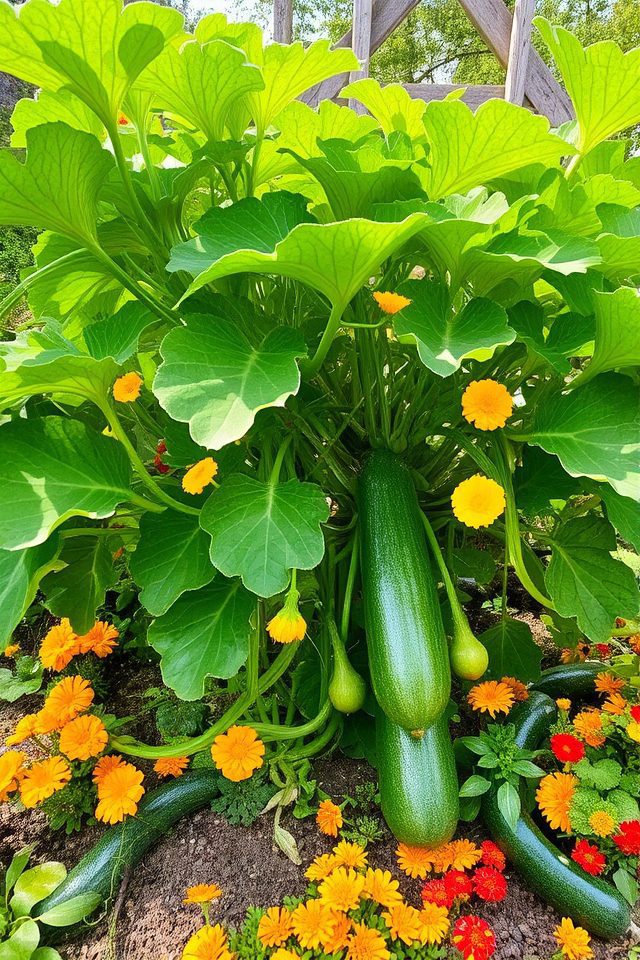
Zucchini can serve as a vibrant focal point in your garden, thanks to its lush, broad leaves and striking yellow flowers. By planting zucchini in a prominent location, you can create visual interest and attract pollinators. Pair zucchini with colorful companion plants like marigolds or nasturtiums to enhance its aesthetic appeal. Additionally, utilizing vertical gardening techniques with trellises can showcase zucchini’s sprawling vines, adding height and dimension to your garden design.
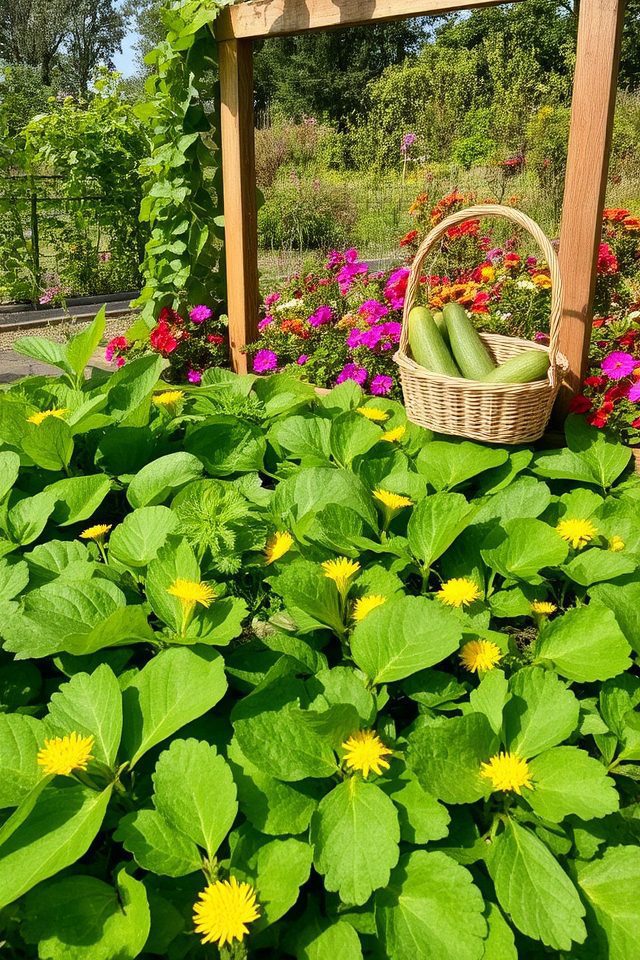
Integrating zucchini into your edible landscaping can enhance both the aesthetics and functionality of your garden. With their broad, lush leaves and vibrant yellow flowers, zucchini plants can serve as a striking backdrop to other ornamental plants. Plant them alongside herbs, like basil and parsley, to create a visually appealing and productive garden space. By incorporating these vegetables into your landscape design, you can enjoy fresh produce while beautifying your outdoor environment.
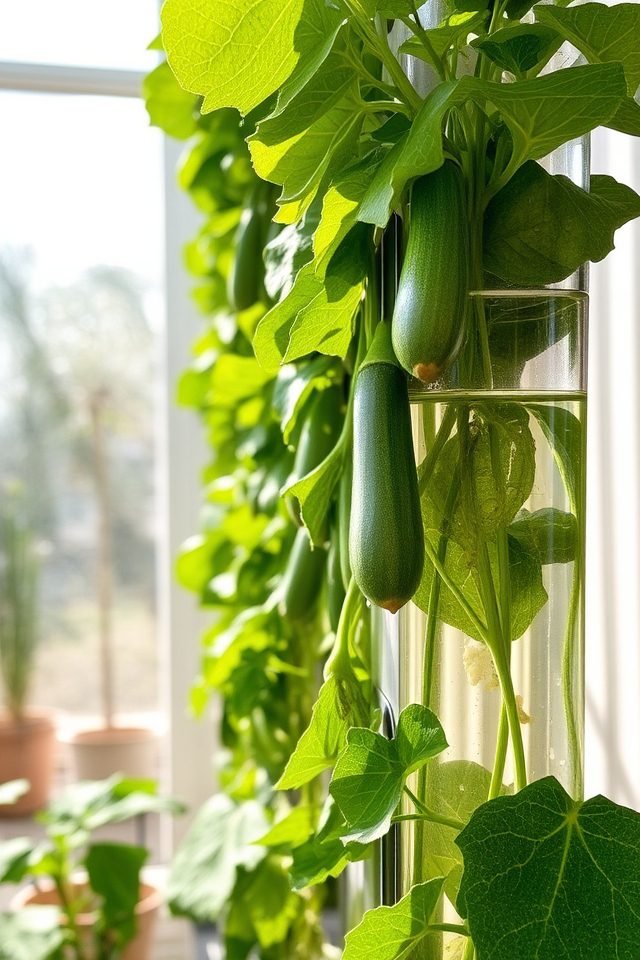
Vertical hydroponic zucchini gardening offers a space-efficient and innovative way to grow this delicious vegetable. Utilizing a vertical system allows for better air circulation, reducing disease risk, and maximizing sunlight exposure. Hydroponics eliminates soil, using nutrient-rich water instead, which can result in faster growth and higher yields. Ideal for small spaces, this method also enhances accessibility, making it easier to tend to plants. With proper support, zucchini can thrive in a vertical setup, producing abundant harvests in limited areas.
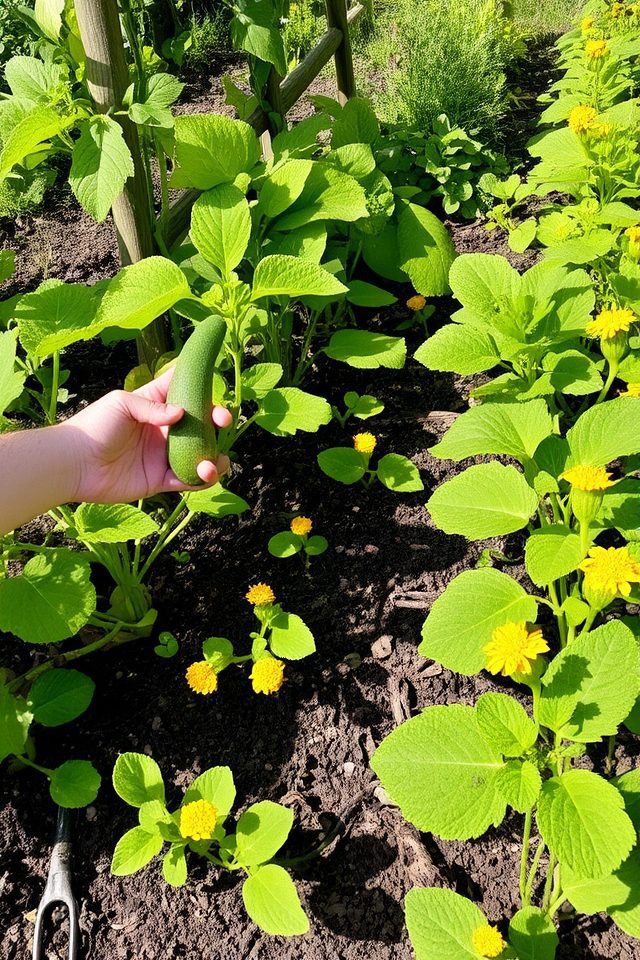
Succession planting is an effective strategy for ensuring a continuous harvest of zucchini throughout the growing season. By sowing seeds or transplanting seedlings at staggered intervals, typically every two to three weeks, gardeners can enjoy fresh zucchini from early summer until the fall. This method not only maximizes yield but also minimizes the risk of crop failure, as it spreads out the harvest. Consider selecting different zucchini varieties for added diversity in flavors and textures.
So, summon your inner gardening wizard and let your zucchini dreams flourish! With techniques like vertical trellises soaring to the sky and colorful companion plants dancing alongside, your garden will be the envy of the neighborhood. Embrace container gardening for those cozy corners, and watch your zucchinis flourish like never before! Every idea is a step toward a bountiful harvest, bursting with flavor and life. Get ready to create a zucchini paradise that’ll leave your taste buds singing!
